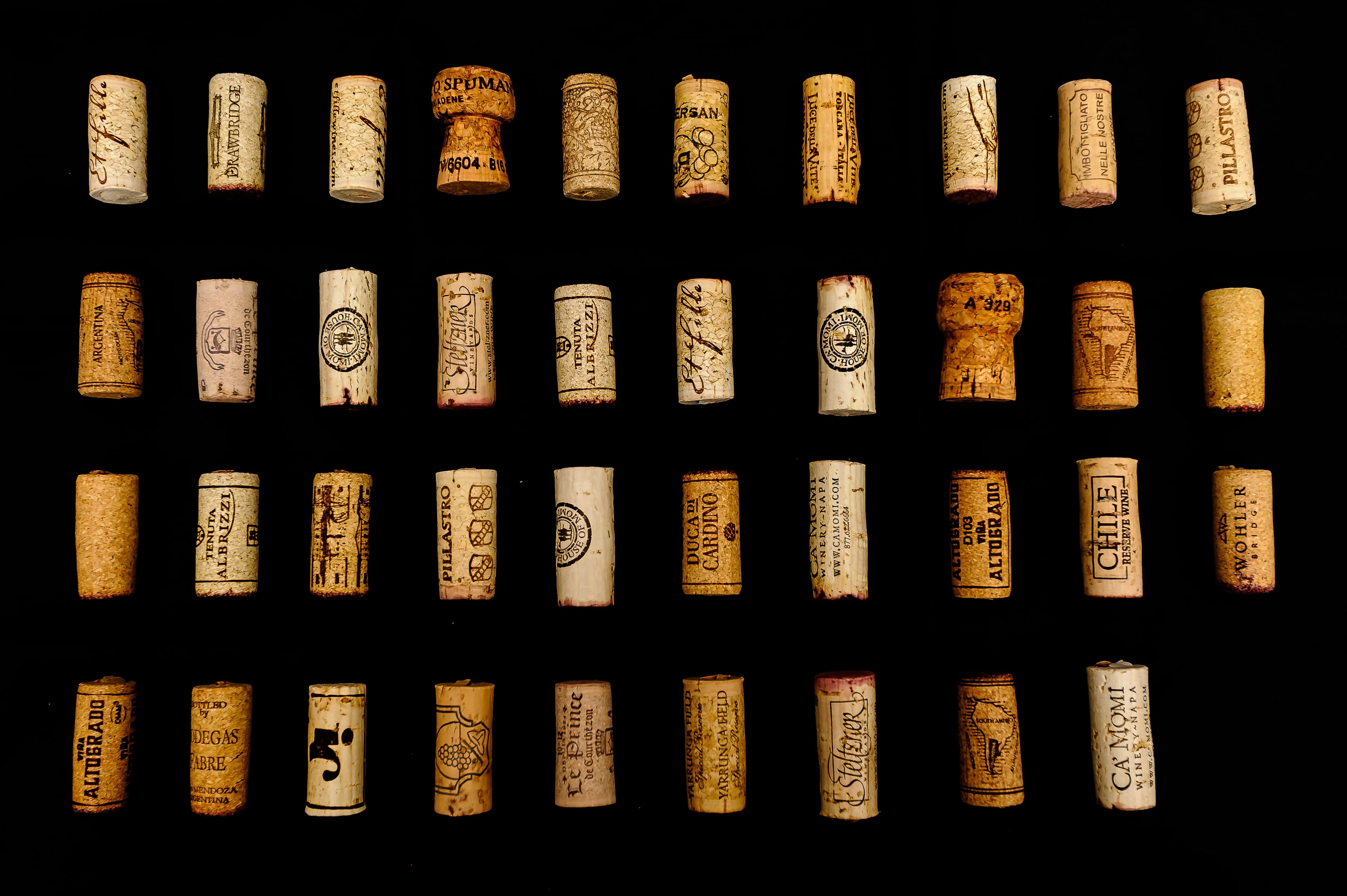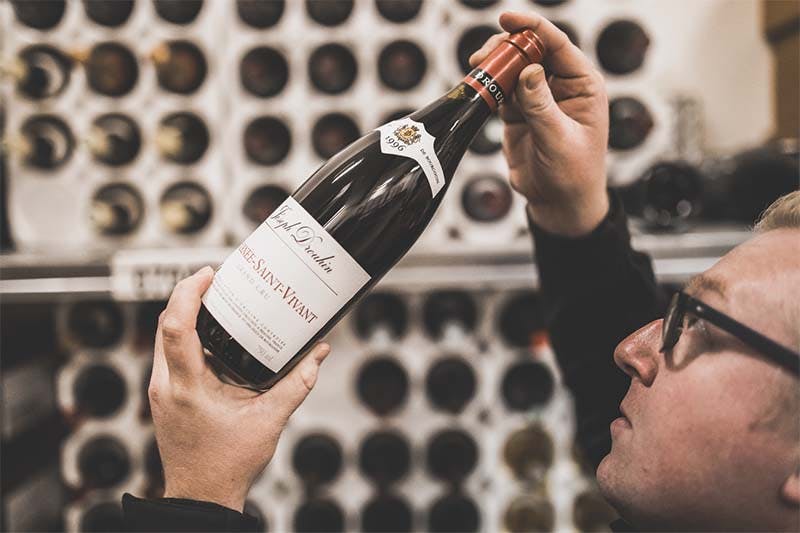The Colors of Bordeaux Wines: From Red to White
7 min read
Head of Content

The Bordeaux region, globally renowned for its wines, offers a color palette as rich as its terroirs. From deep red to golden white, including shades of rosé, Bordeaux wines captivate both the eye and the palate. This chromatic diversity reflects not only the variety of grape varieties cultivated in the region but also the different winemaking techniques employed by Bordeaux winemakers.
Red Wines of Bordeaux
Red wines are the emblem of Bordeaux, representing about 89% of the region's total production. Their worldwide reputation is based on a perfect balance between power and elegance, the result of centuries of expertise.
Red Winemaking Process
The red winemaking process in Bordeaux follows a meticulous procedure aimed at extracting color, tannins, and aromas from the grapes. After harvesting, the grapes are destemmed and crushed. Alcoholic fermentation then takes place in the presence of the skins, seeds, and sometimes stems, a process called maceration. This crucial step usually lasts from 15 to 30 days, depending on the desired wine style.
During maceration, anthocyanins, responsible for the red color, are extracted from the grape skins. The duration and intensity of maceration directly influence the depth of the wine's final color. For example, a grand cru classé like Château Lafite Rothschild may macerate for up to 4 weeks to achieve its intense color and complex tannic structure.
After fermentation and maceration, the free-run wine is separated from the pomace. Pressing the pomace yields press wine, often partially reincorporated to add structure and longevity to the final wine. Barrel aging, typical of grand Bordeaux wines, also contributes to the evolution of the wine's color and aromas.
Color Range According to Age
The color of a Bordeaux red wine evolves significantly over time, offering a true visual spectacle. A young wine typically displays an intense purple hue, almost opaque, with violet reflections on the edge of the glass. This vibrant color is due to the significant presence of freshly extracted anthocyanins from the grape skins.
With age, the wine gradually loses its color intensity. A Bordeaux aged 5 to 10 years will often have a deep ruby color, while a 15 to 20-year-old wine will shift to garnet shades with brick-red reflections on the rim. Very old Bordeaux, 30 years and older, may exhibit a brick or amber color, indicating long maturation.
This color evolution is a valuable indicator of the wine's age and quality. According to a 2019 study by the Bordeaux Institute of Vine and Wine Sciences, the speed of this evolution can vary significantly by vintage and appellation. For example, Saint-Émilion wines, rich in Merlot, tend to evolve in color more quickly than those from Médoc, dominated by Cabernet Sauvignon.
Reputable Appellations for Reds
Bordeaux boasts several appellations famous for the quality of their red wines. On the Left Bank, Médoc is home to prestigious appellations such as Pauillac, Margaux, Saint-Julien, and Saint-Estèphe. These wines, dominated by Cabernet Sauvignon, are known for their tannic structure, aging potential, and intense color.
On the Right Bank, Saint-Émilion and Pomerol produce wines where Merlot reigns, offering softer and fruitier reds, often with a more developed color in their youth. Château Pétrus, an icon of Pomerol, is a perfect example of the color richness that Merlot can achieve under optimal conditions.
Graves, south of Bordeaux, also produces renowned reds, such as Château Haut-Brion, the only Premier Grand Cru Classé located outside Médoc. These wines stand out for their balance between the characteristics of Cabernet Sauvignon and Merlot, offering a complex color palette.
White Wines of Bordeaux
Although less known than their red counterparts, Bordeaux white wines account for about 10% of the region's total production. They are distinguished by their freshness, aromatic complexity, and diversity of styles, ranging from dry whites to world-famous sweet wines.
Bordeaux White Grape Varieties
The main white grape varieties grown in Bordeaux are Sauvignon Blanc, Sémillon, and Muscadelle. Sauvignon Blanc, representing about 54% of white grape plantings, brings freshness, liveliness, and citrus aromas. Sémillon, covering 36% of the area, offers richness, roundness, and notes of ripe fruits. Muscadelle, although minority (5% of plantings), contributes floral and muscat aromas.
Other less common varieties, such as Ugni Blanc, Colombard, and Merlot Blanc, complete the varietal palette of Bordeaux whites. This diversity allows winemakers to create complex and balanced blends suited to different styles of white wines.
White Winemaking Techniques
The winemaking of white wines in Bordeaux differs significantly from that of reds. After harvest, the grapes are quickly pressed to extract juice without prolonged skin contact. This technique preserves freshness and limits the extraction of phenolic compounds responsible for oxidation.
Alcoholic fermentation occurs at low temperatures (between 16°C and 20°C) to preserve the delicate aromas of the grape. Some producers opt for barrel fermentation, particularly for high-end cuvées, adding complexity and oak notes to the wine.
For dry white wines, malolactic fermentation is often avoided to retain the wine's natural acidity. However, for sweet wines like Sauternes, grapes are harvested overripe, affected by noble rot (Botrytis cinerea). This beneficial infection concentrates sugars and aromas, resulting in wines of exceptional richness and complexity.
Appellations Specializing in Dry and Sweet Whites
Bordeaux has several appellations renowned for their white wines. For dry whites, Entre-deux-Mers, located between the Garonne and Dordogne, is the largest. It produces fresh and aromatic wines, predominantly Sauvignon Blanc.
Pessac-Léognan, in Graves, is famous for its grand dry whites, like Château Haut-Brion blanc, combining power and finesse. These wines, often aged in barrels, exhibit remarkable aging potential.
For sweet wines, Sauternes and Barsac are globally recognized appellations. Château d'Yquem, Premier Cru Supérieur of Sauternes, produces wines of exceptional richness and longevity. These golden wines, with amber reflections, can be stored and improve for decades.
Rosé and Clairet Wines of Bordeaux
Although less known than reds and whites, Bordeaux rosé and clairet wines have seen a resurgence of interest in recent years. Representing about 1% of total production, these wines offer a refreshing and versatile alternative.
Difference Between Rosé and Clairet
Rosé and clairet are two distinct wine styles, although often confused. Bordeaux rosé is generally paler, with a color ranging from pale pink to salmon pink. It features aromas of fresh red fruits and a light structure.
Clairet, a Bordeaux specialty, is a wine that falls between rosé and light red. Its color is more pronounced, leaning towards light ruby. It has a more tannic structure than classic rosé, with more pronounced aromas of ripe red fruits.
Historically, the term "clairet" referred to light red wines from Bordeaux, highly appreciated in England during the Middle Ages. Today, it is a specific appellation, regulated since 1967.
Production Methods
The production of rosé in Bordeaux primarily uses the direct press method. Grapes are pressed immediately after harvesting, with minimal skin contact. This technique results in pale and delicate rosés.
For clairet, the bleeding method is more commonly used. After a short maceration time (generally 24 to 48 hours), part of the juice is "bled" from the red maceration tank. This technique gives clairet its more intense color and greater structure.
The grape varieties used are mainly Merlot, Cabernet Sauvignon, and Cabernet Franc, the same as for red wines. The proportions vary according to the desired style, with Merlot often favored for its roundness and fruitiness.
Appellations Producing Rosés and Clairets
Several Bordeaux appellations produce quality rosés and clairets. The Bordeaux Rosé appellation covers the entire region and produces fresh and fruity wines, ideal for summer consumption.
The Bordeaux Clairet appellation is specific to this style of wine. It imposes stricter production rules, particularly regarding yield and maceration time, to guarantee the typicity of the product.
Some appellations known for their reds also produce quality rosés. For example, Château Léoville Las Cases, Second Grand Cru Classé of Saint-Julien, makes a refined rosé in small quantities, highly sought after by enthusiasts.
The production of rosés and clairets in Bordeaux, although minor, is experiencing significant growth. According to the Bordeaux Wine Council (CIVB), rosé production increased by 15% between 2015 and 2020, reflecting a growing demand for these fresh and accessible wines.
The diversity of Bordeaux wines, from deep red to golden white, including shades of rosé and clairet, showcases the richness and complexity of this wine region. Each color tells a story—one of terroir, grape variety, winemaking technique—and invites exploration of the unique tasting palette that Bordeaux has to offer.
Share this article











